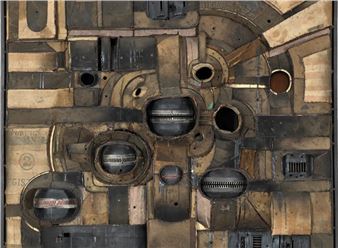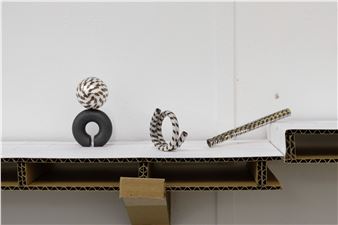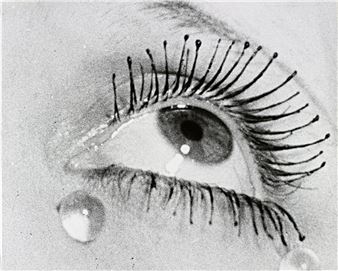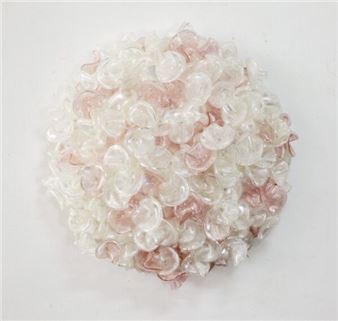Robert Motherwell
The argument is sometimes made that collage is the greatest invention of modernism. And when it is, the collages of Robert Motherwell are inevitably used as cases in point.
Born in 1915 in Aberdeen, Washington, Motherwell died seventy-six years later in Cape Cod Massachusetts, unquestionably one of the titans of 20th century art. For so emotive and seemingly intuitive an artist, he had a surprisingly academic educational background. He received a BA from Stanford, studied philosophy at Harvard, and took classes at Columbia with the brilliant art historian Meyer Schapiro. As editor of the Documents of Twentieth Century Art Motherwell was a highly influential public intellectual who helped shape American culture's understanding of modernism.
As a young artist and intellectual in New York in the 1940's he found himself at the epicenter of one of the most significant art movements of the 20th century - abstract expressionism. He had already immersed himself in European culture, but it often seemed in those days that Europe had come to New York. Andre Breton, Max Ernst, Roberto Matta and Marcel Duchamp were part of a generation of European artists who came to America to escape the war. Their influence and the surrealism they brought from Paris were crucial in the gestation of modern art in America. Their work had an enormous impact on Jackson Pollock, Mark Rothko, William Bazioites, Barnett Newman and Roberto Matta, and on Motherwell.
His early collages were encouraged by Peggy Guggenheim at whose gallery Art of This Century he exhibited, and throughout the 1940's Motherwell embraced the technique. It sits at the core of this exhibition, but Motherwell's approach to the medium informs the other works on paper and original lithographs and etchings. The early collages were recently exhibited at the Peggy Guggenheim Collection in Venice (2013) and at the Guggenheim Museum New York (2014).
Ultimately, Motherwell's work for me is about emotion. I don't look at Motherwell's work so much as experience it. It's an approach that Motherwell appeared to condone. "But look for yourselves," Motherwell once advised his viewing public. "...If the amounts of black and white are right, they will have condensed into quality, into feeling."
It is an honour for Annandale to bring works of such significance to Australia. The centenary of Motherwell's birth is next year; the three volume catalogue raisonne of his paintings, drawing and collages came out last year; numerous museums worldwide will be paying tribute to his work and legacy. The National Gallery of Australia has an exhibition Robert Motherwell - At Five in the Afternoon of his ‘painterly prints' running until October 6th. The exhibition reveals how Motherwell created inventive collages and an imagery of gestural flourishes, and is drawn entirely from the Gallery's rich collection.
Our exhibition of Robert Motherwell in 2005 was in association with Bernard Jacobson Galleries, London and I am pleased that this collaboration continues. I would like to thank Bernard Jacobson and Robert Delaney for making the current exhibition possible.
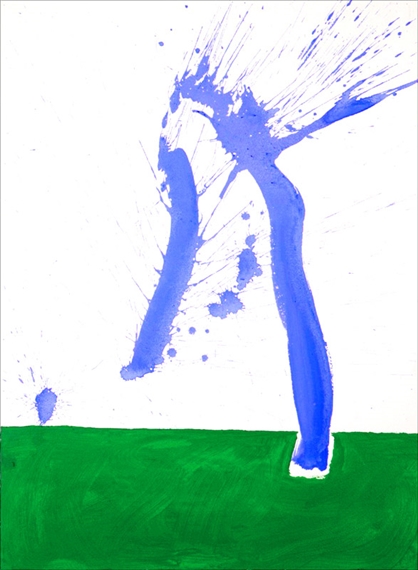
Recommended for you
The argument is sometimes made that collage is the greatest invention of modernism. And when it is, the collages of Robert Motherwell are inevitably used as cases in point.
Born in 1915 in Aberdeen, Washington, Motherwell died seventy-six years later in Cape Cod Massachusetts, unquestionably one of the titans of 20th century art. For so emotive and seemingly intuitive an artist, he had a surprisingly academic educational background. He received a BA from Stanford, studied philosophy at Harvard, and took classes at Columbia with the brilliant art historian Meyer Schapiro. As editor of the Documents of Twentieth Century Art Motherwell was a highly influential public intellectual who helped shape American culture's understanding of modernism.
As a young artist and intellectual in New York in the 1940's he found himself at the epicenter of one of the most significant art movements of the 20th century - abstract expressionism. He had already immersed himself in European culture, but it often seemed in those days that Europe had come to New York. Andre Breton, Max Ernst, Roberto Matta and Marcel Duchamp were part of a generation of European artists who came to America to escape the war. Their influence and the surrealism they brought from Paris were crucial in the gestation of modern art in America. Their work had an enormous impact on Jackson Pollock, Mark Rothko, William Bazioites, Barnett Newman and Roberto Matta, and on Motherwell.
His early collages were encouraged by Peggy Guggenheim at whose gallery Art of This Century he exhibited, and throughout the 1940's Motherwell embraced the technique. It sits at the core of this exhibition, but Motherwell's approach to the medium informs the other works on paper and original lithographs and etchings. The early collages were recently exhibited at the Peggy Guggenheim Collection in Venice (2013) and at the Guggenheim Museum New York (2014).
Ultimately, Motherwell's work for me is about emotion. I don't look at Motherwell's work so much as experience it. It's an approach that Motherwell appeared to condone. "But look for yourselves," Motherwell once advised his viewing public. "...If the amounts of black and white are right, they will have condensed into quality, into feeling."
It is an honour for Annandale to bring works of such significance to Australia. The centenary of Motherwell's birth is next year; the three volume catalogue raisonne of his paintings, drawing and collages came out last year; numerous museums worldwide will be paying tribute to his work and legacy. The National Gallery of Australia has an exhibition Robert Motherwell - At Five in the Afternoon of his ‘painterly prints' running until October 6th. The exhibition reveals how Motherwell created inventive collages and an imagery of gestural flourishes, and is drawn entirely from the Gallery's rich collection.
Our exhibition of Robert Motherwell in 2005 was in association with Bernard Jacobson Galleries, London and I am pleased that this collaboration continues. I would like to thank Bernard Jacobson and Robert Delaney for making the current exhibition possible.
Artists on show
Contact details


 ARTISTS
ARTISTS











